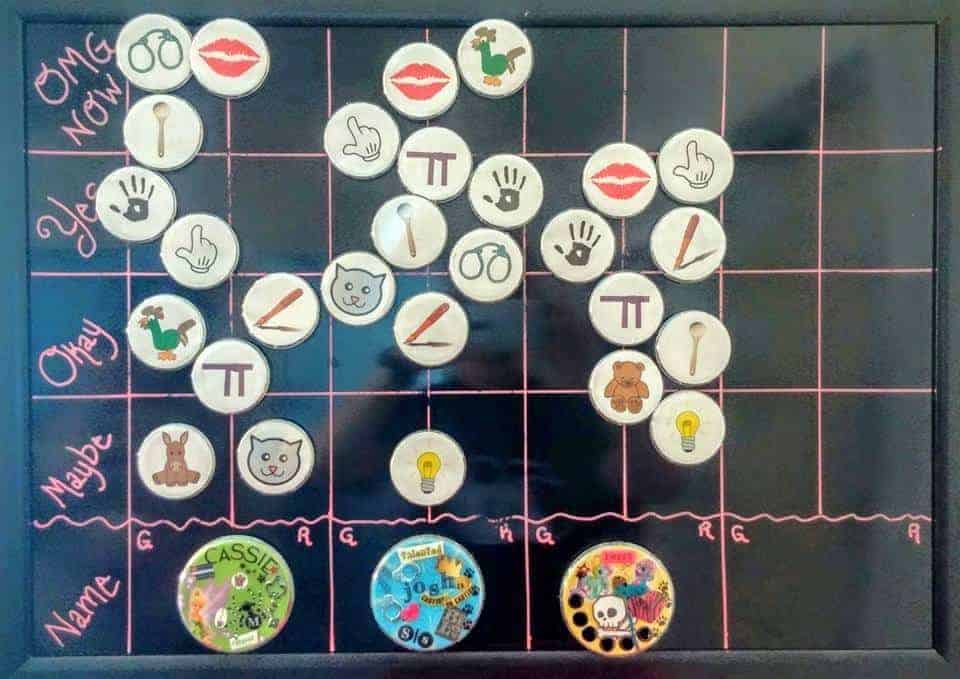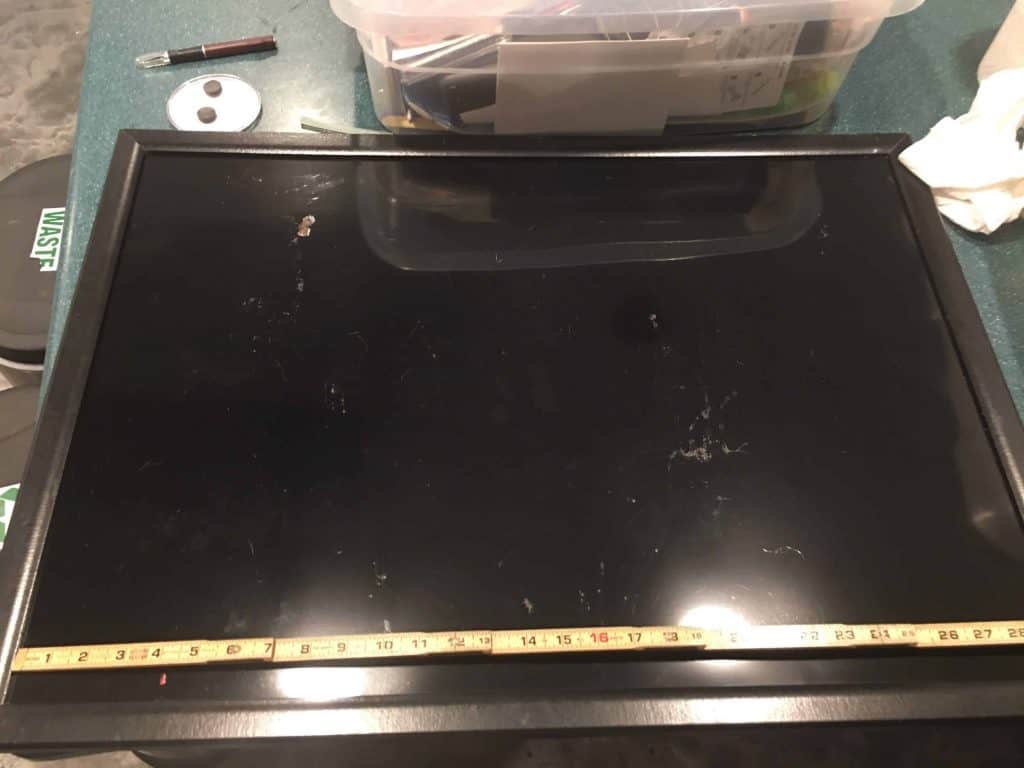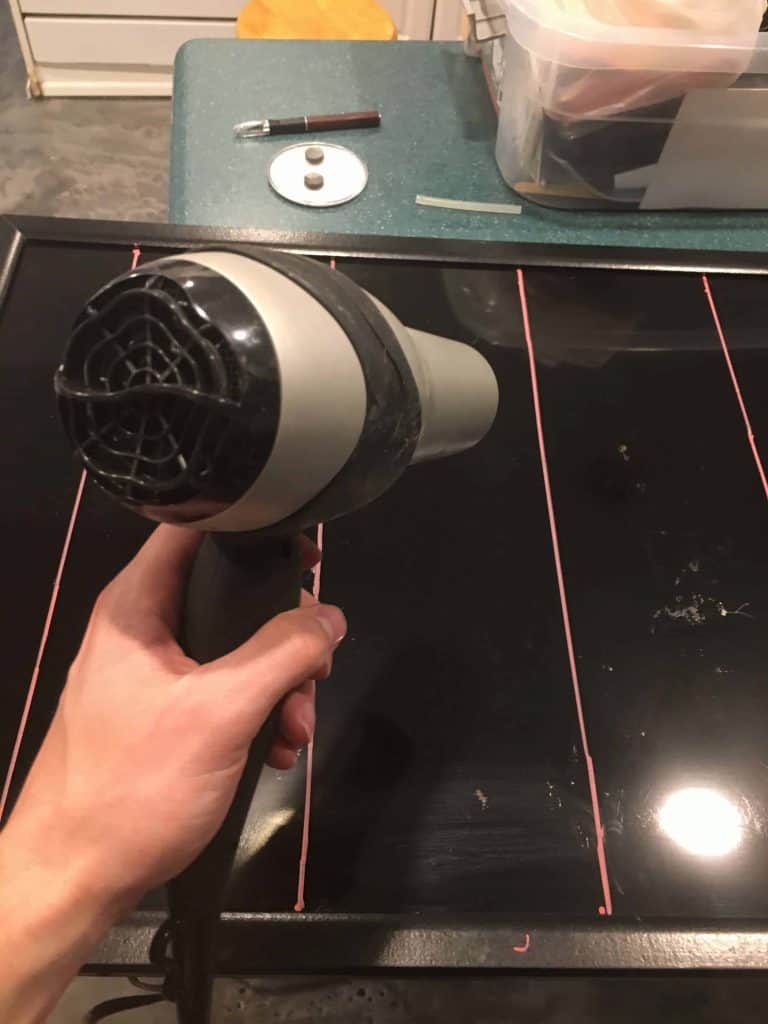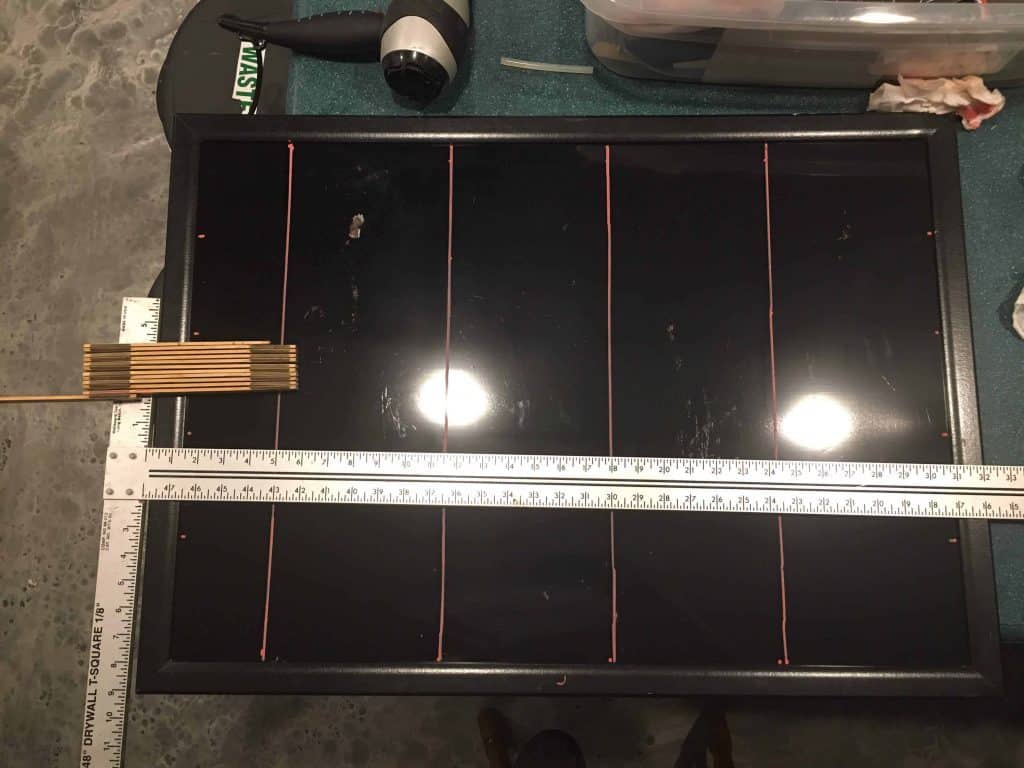In our many years teaching non-monogamous and kinky folks how to build better relationships we’ve created a lot of useful tools. These include:
- An epic blog post on how to find kinky partners.
- A Facebook group for non-monogamous folks.
- A Trello board for negotiating power exchange (spoiler alert),
- A free training on the five-step strategy that our clients use to create amazing open relationships.
But if I had to name the one tool that gets people excited no matter where we’re teaching, that’s useful for almost everyone in every situation, that’s – dare I say – genius, it would be the DesireMap.
In this post, we’re going to walk you step-by-step through how to create a DesireMap of your very own.
WTF is a DesireMap?
At this point, you’re probably saying one of two things. Either:
FINALLY. You guys have been talking about doing this post FOREVER.
Or:
What the fuck is a DesireMap?
Simply put: the DesireMap is our secret weapon for combating mismatched libidos, especially in open relationships.
Mismatched libidos
Mismatched libidos, or having different sex drives, is a topic that we’ve touched on repeatedly in the past. You should listen to this podcast episode for an in-depth discussion. Every couple (and every dyad in open relationships) has different sex drives. These differences have consequences that go far beyond someone not getting their sexual needs met. A recent article in the Gay Times puts it beautifully:
The person wanting more sex often feels rejected, unloved or undesired. The person wanting less sex often feels irritated by the sexual demands of their partner, they can feel that their partner is pestering them, they often become avoidant of any touch or kind words for fear that their partner will take the wrong hint that would lead to an expectation of sex.
Mismatched libidos aren’t limited to dyads. They show up in open relationships as well. In the ten years Cassie and I have been polyamorous we’ve had exactly two partners with comparable sex drives. In others, we’ve had to work to make sure everyone’s needs were getting met.
There are a number of techniques you can use to mitigate mismatched libidos. Understanding what sex means to you, scheduled intimacy time, masturbation, knowing what turns you on, etc. But the most effective solution we’ve found (and the one that we use every day in our own relationship) is the DesireMap.
Our secret weapon
The DesireMap is a life-changing tool that allows partners to communicate exactly what they’re in the mood for without saying a word. It:
- Keeps the higher sex drive partner from feeling like they’re pressuring their partner.
- Helps the lower sex drive partner enjoy the activities they’re in the mood for without worrying their partner is going to press for more.
- Prevents the many opportunities for intimacy that are missed simply because you didn’t know your partner was in the mood.
- Accommodates kinky activities and polyamory.
Yeah, but how does it work?
The DesireMap is a board that’s divided into vertical columns. Each person using the Map has their own column. You can use swappable name tags so the Map changes depending on who is currently in the house.
Each person’s name column is further divided into two columns: a “G” for give and an “R” for receive. This is important because (for example) you may really want to tie someone up but have no desire to be tied up yourself.
In addition to the “Name” row at the bottom, the Map is divided into four rows indicating the level of desire in a particular activity: “Maybe,” “Okay,” “Yes,” and “OMG Now.” In our house, any activity at the maybe level requires additional discussion. Any activity at the okay level or higher means you’re good to go.
Different pins are used to indicate different activities. The placement of a pin indicates if you want to give or receive an activity, and how much you desire it. Want to give head more than you want to receive it? Use two of the same pins in different spots. Equally open to giving and receiving the same activity? Put the pin on the line between your give and receive columns.
Examples
In our example above I (blue pin) might be open to both giving and receiving electrical play (light bulb). Cassie (green pin) and I are both up for giving fingering (pointy hand). Our partner (yellow pin) would like to be fingered, so we could get started on that activity without further discussion. If Cassie wanted to eat pussy more than she wanted to have hers eaten, she might have an additional kitty pin in her give column at a higher level.
By making it a habit to regularly update your Map throughout the day you can ensure that you and your partner(s) are always aware of what everyone is in the mood for.
Building your DesireMap
We’re going walk step-by-step through how to build your own DesireMap. But before we get started there are a couple of things you need to figure out:
Create your plan.
How many people will be using your Map?
Are you in an open relationship? You need to figure out how many people will be using your DesireMap. This affects not only the layout of the board but if you need to create removable name pins.
Where is your Map going to be located?
We suggest putting your Map in a spot that all participants will regularly pass when they’re in the house. The DesireMap is useless if it doesn’t get updated and seen regularly. The conundrum is that the highest-trafficked places in the house tend to be the places your guests and children frequent as well. For this reason, we suggest using vanilla-appropriate pins.
What pins do you need?
The pins you need are going to vary wildly depending on what you’re into. First, sit down with your partner(s) and brainstorm a list of activities you do on a regular basis, then come up with a symbol for each.
containing our pin list, rules, and the art we use for our own pins, which you can modify and print for yourself.
What are the rules you’ll use for your DesireMap?
You and your partners need to negotiate the rules that govern the use of your Map. You can use our rules as a template. At a minimum, the rules should address the following:
- When participants are expected to update their map.
- Which pins indicate which activities.
- That NO ONE can touch anyone else’s column (it defeats the whole purpose) of the Map.
- That nothing on the Map can indicate consent for an activity for which you haven’t previously negotiated (If you haven’t already negotiated oral sex with someone, a black hanky doesn’t mean you can stick your dick down their throat).
- Reiterate that anyone is allowed to say no to anything at any time.
How are you storing your pins?
We suggest either a basket or a magnetic surface you can attach next to the board. This is how we store our pins:
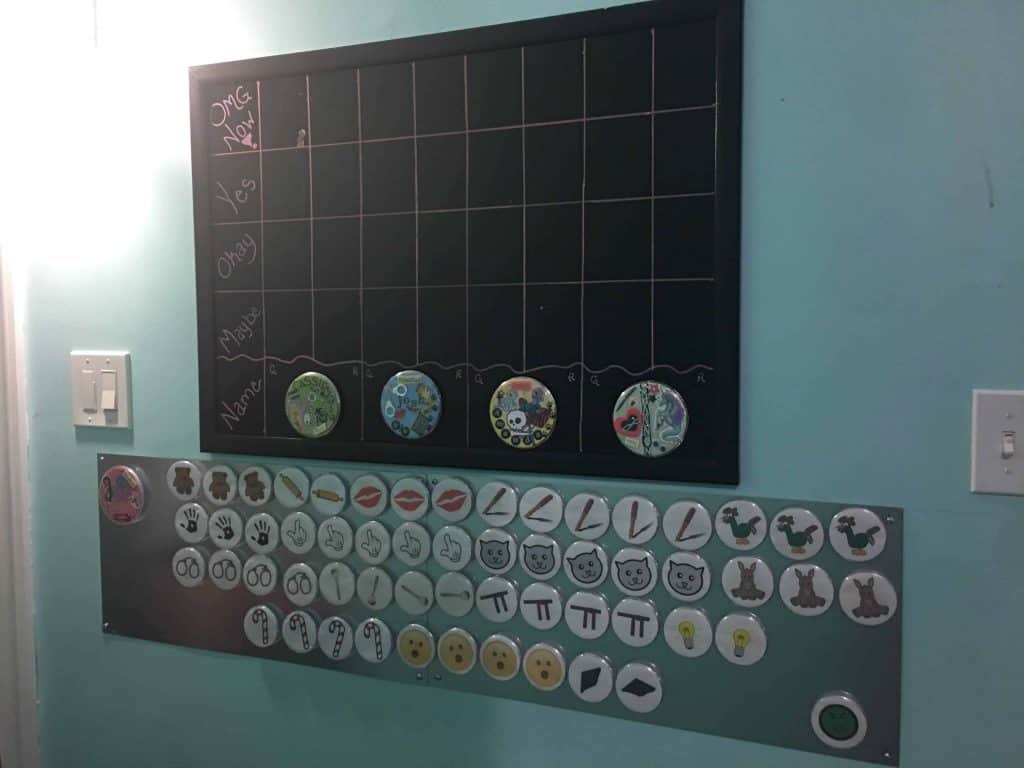
Gather your supplies
Before you can get started crafting your DesireMap you need to gather some supplies. You probably have some of these item’s lying around the house. You can get the rest online or from a craft store such as Michael’s.
What you need:
- A magnetic dry erase board.
- A liquid chalk marker (dry erase marker rubs off too easily).
- 2 ½ inch clear button pins (make sure you get enough for each person to both give your chosen activity).
- 3.65-inch clear button pins (if you’re making name tags).
- Craft magnets.
- Paper, stickers, cardstock, and other supplies to make your name tags.
- Regular glue, hot glue sticks, and a hot glue gun.
- Scissors.
- A measuring tape.
- Your pin art (or use ours).
- A straight edge.
Not necessary but highly recommended:
- An X-acto knife.
- A drywall T-square.
- A hair drier.
- Command hanging strips to hang your board on the wall without damaging it. These do not work well for hanging a basket full of pins from the wall.
Make ALL THE THINGS
Your Board
First, create the board itself. You’ll be drawing a lot of lines that cross, so you need to make sure the marker dries between each step so you don’t smudge your existing work. A hair drier will speed the process up significantly.
Measure your columns first A hair drier will expedite the process A T-square speeds things up Create your G and R columns Add labels and you’re finished!
- Start with creating your name columns. Mark off a few inches on the left of the board to leave space for your row labels, and then divide the remaining space up equally by the number of people who will be using the board at once.
- Make sure that your name columns are at least as wide as your name tags (if applicable), and at least twice as wide as your activity pins.
- Mark the same measurements on the top and bottom of the board, then use a straight edge to connect your points. If you have a drywall T-square you can mark one side and then use the edge of the board to draw your line.
- Create your rows. Measure a space along the bottom high enough to contain your name tags. Divide the remainder of the vertical space into four sections, and add your row labels along the left.
- Divide each person’s column in half to create give and receive columns. These columns should start above the space set aside for your name markers, and divide the remaining rows. Add “G” and “R” labels at the bottom of each.
Your Pins
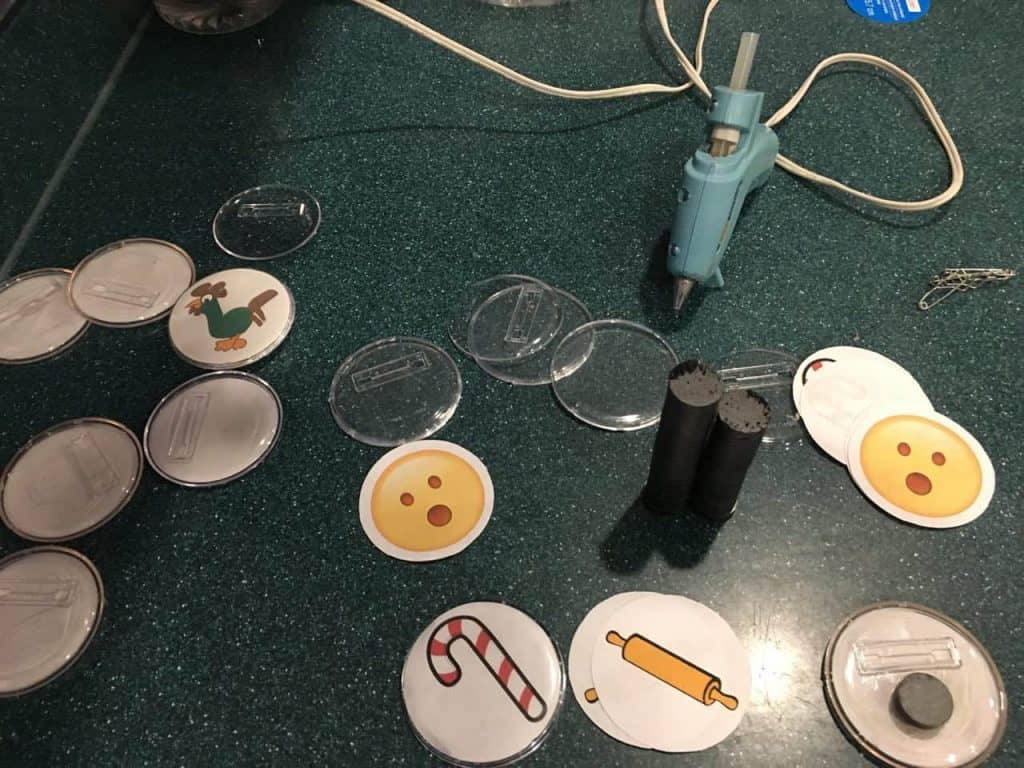
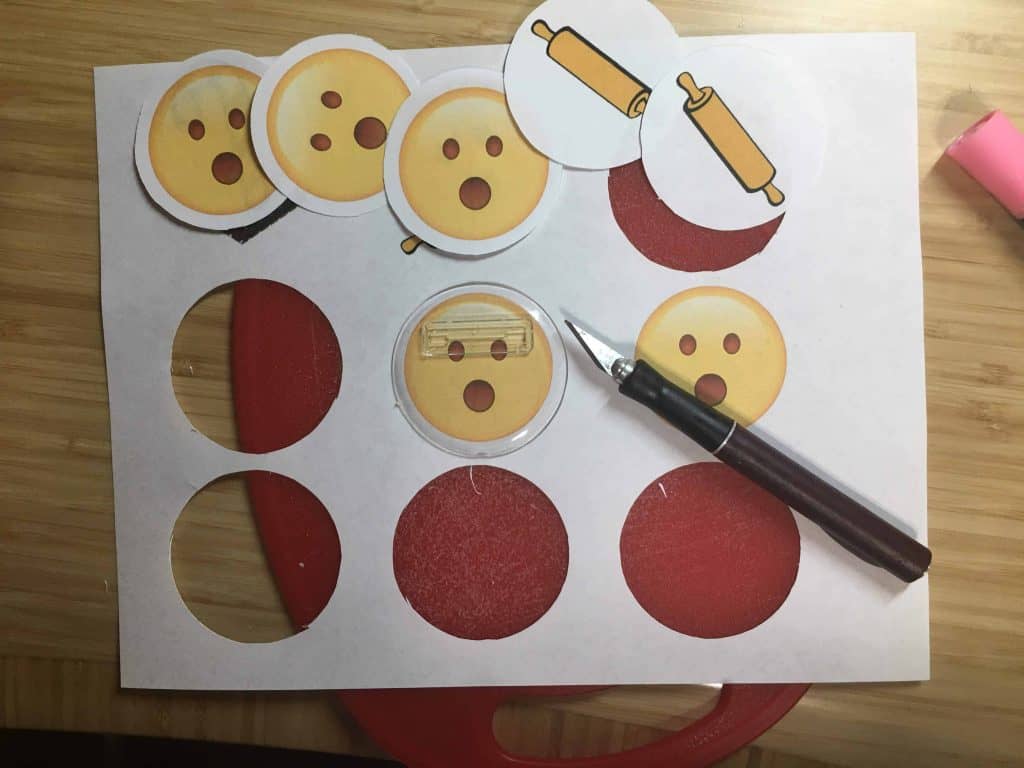
- Remove the metal pins from the plastic buttons.
- Trim your art to fit the button. The easiest way to do this is to place the art on a cutting board or craft mat, lay the button overtop, and then cut around the button with an x-acto knife.
- Place the art in the button and snap it closed.
- Use hot glue to attach a single magnet to the back of the button.
- Make more pins!
Your name tags
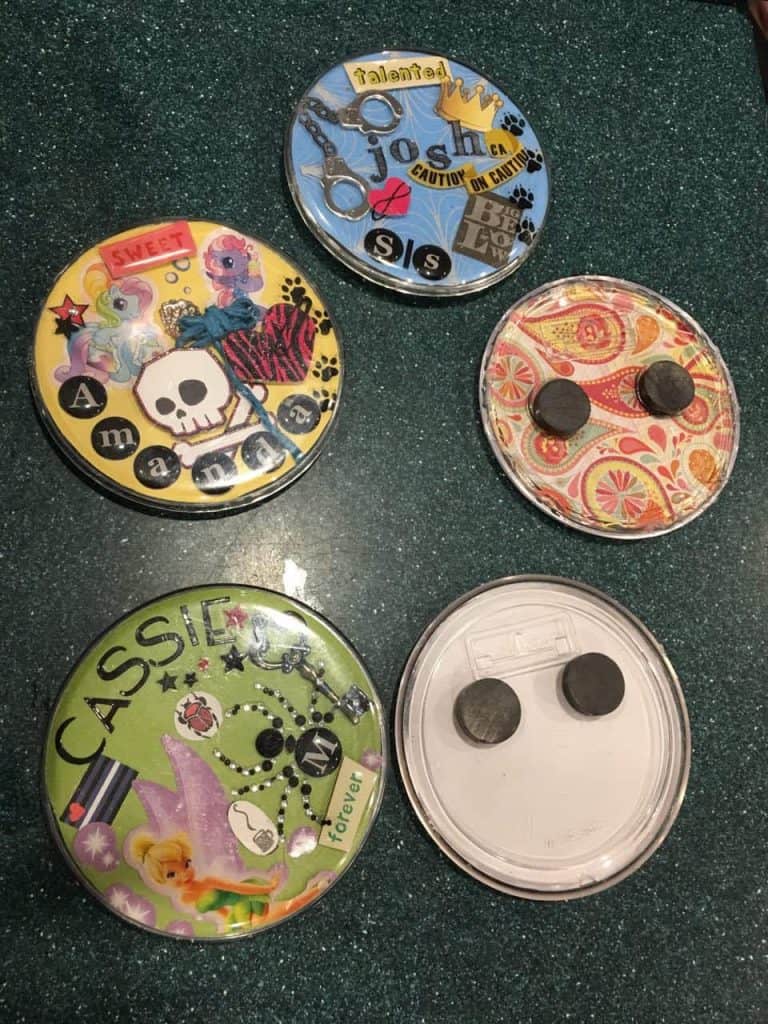
You don’t have to go crazy with your name tags. The simplest method is to write your names directly onto the board with your marker.
But crafting your name tags makes the board look more badass, lets you express your creativity and is a great activity to do as a group. In our home creating a new name tag is an event that all the adults participate in. Here’s how to create a kickass name tag of your very own:
- Remove the metal pin from the back of a large button.
- Pick a paper that you want to use as backing material (card stock works well), and trim it to fit the button.
- Attach, stickers, scrapbooking supplies, clippings from magazines, icons printed from offline, and small keepsakes to the backer to create a piece of art that reflects your personality.
- Hot glue two magnets to the back of the button.
- Depending on how much you’ve stuffed inside, you may have to add a bead of glue around the seam of the button to keep it closed.
Have a beer
Hang your board. Put up your name tags. Stash your pins. Have a drink. Admire your handiwork.
Getting the most from your DesireMap
You now have a DesireMap of your very own. Congrats! You’ve taken a huge step towards overcoming mismatched libidos. But the DesireMap is only an effective tool if you’re using it consistently. People’s sex drive and interests change throughout the day so you need to get into the habit of checking and updating the board regularly.
So, we suggest you check and update your DesireMap:
- When you get up in the morning.
- Lunchtime (if you’re home).
- Whenever you get home from work or an outing.
- Before you retire to your bedroom for the night.
- Whenever you pass the board and see something interesting
Can’t remember to check your DesireMap? Set yourself reminders on your phone until you’re in the habit.
Final thoughts
It’s important to remember that your DesireMap is a (powerful) supplement to open and honest communication. It’s not a replacement. If you want to change something about your sex life you need to have a conversation with your partner(s).
If you want more information on mismatched libidos and how to overcome them, check out this podcast episode.
Now go download the pins and rules, create your board, and have some mind-blowing sex.

